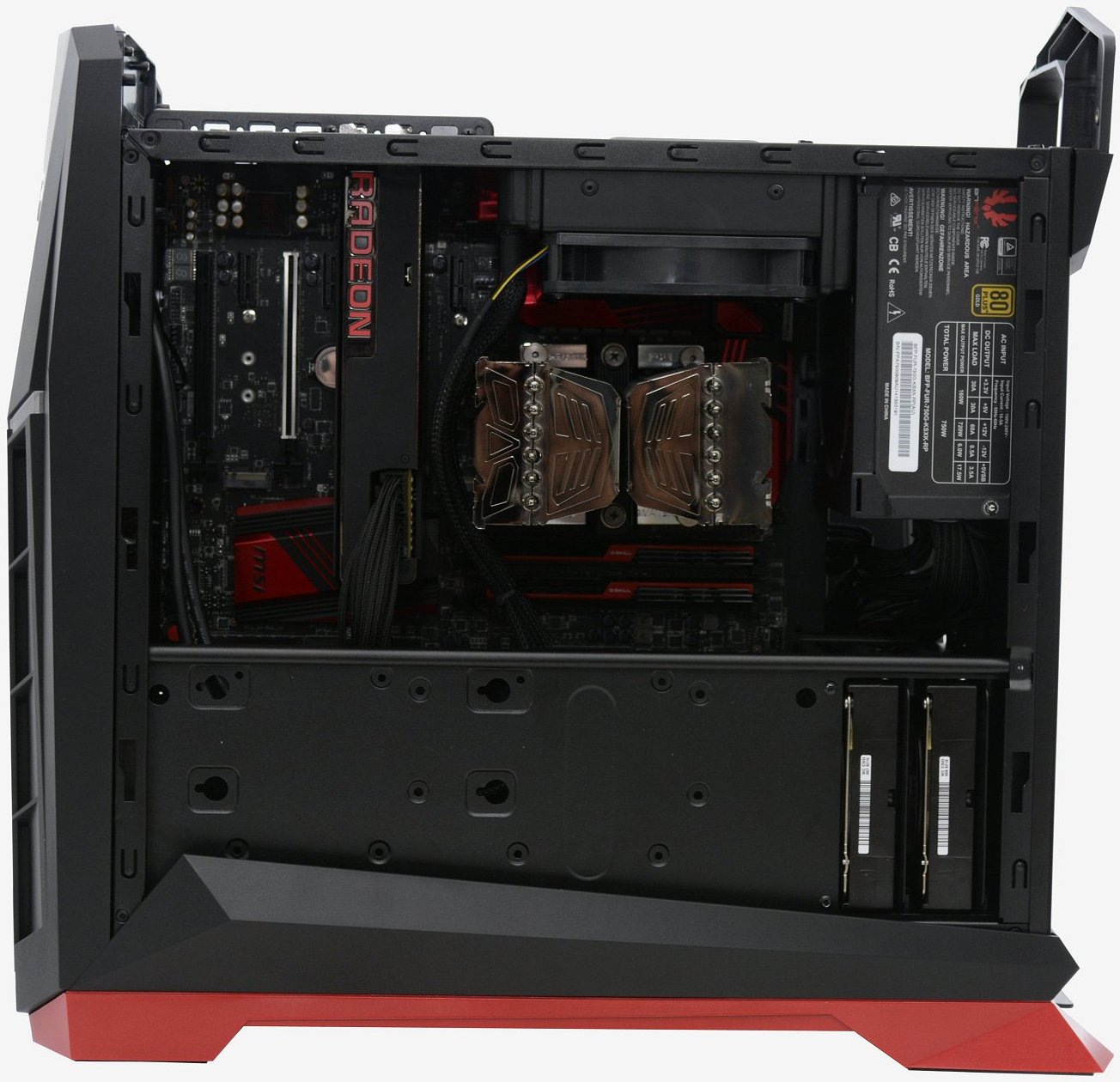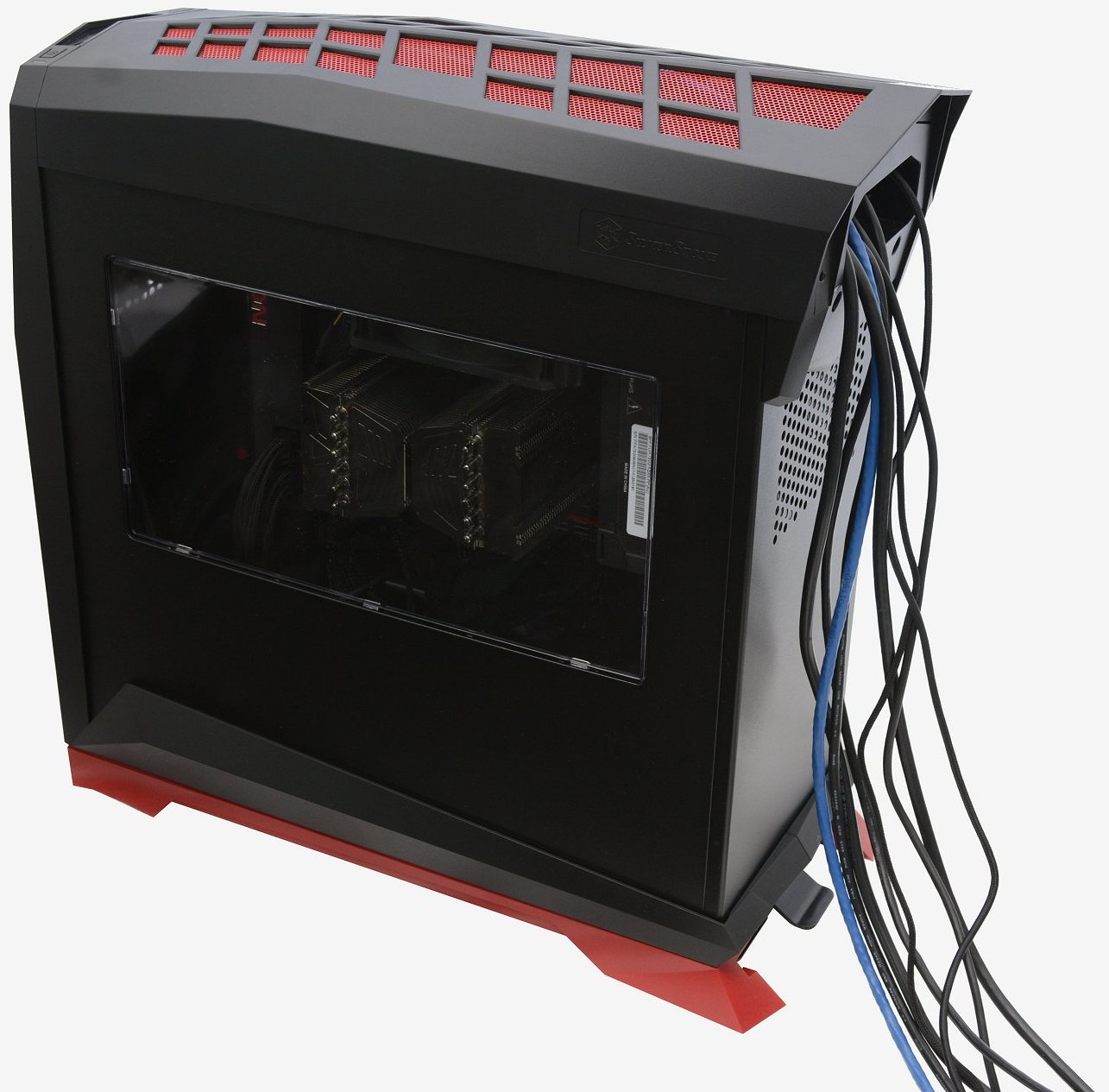Performance and Final Thoughts
To ensure accurate thermal results, we installed the same hardware in each case in virtually the same way. Components included the Asrock Fatal1ty 990FX Professional, Phenom II X6 1100T, Prolimatech Megahalems in passive mode (i.e. no fan actively dispelling heat), the Inno3D GeForce GTX 580 OC and powering the system is the OCZ's ZX 1000w power supply.
Granted all this hardware is getting old now but the Phenom II X6 1100T and Inno3D GeForce GTX 580 certainly pump out a lot of heat which makes them useful for such a test.

The Silverstone RVX01 kept the CPU cool at 69 degrees which is only a few degrees higher than the best result we have recorded using the FT05. This placed the RVX01 on par with the In Win D-Frame and made it slightly better than the Cooler Master HAF X and BeQuiet! Silent Base 800.
The GPU temperatures were just as impressive as the RVX01 was able to match the Cooler Master HAF X while losing out only to the FT04 and FT05.
As with any computer case, opinions about its aesthetics are just that, so this part of our review is entirely subjective. We think Silverstone has been bold with the RVX01's looks and suspect that gamers will either love or hate the red highlights – they certainly looked nice with the MSI Z170A Gaming M7 and Radeon R9 Fury X, but not everyone will want a red and black build.
Assuming you like what Silverstone has done with the RVX01's appearance then there are a few other things to consider. For starters, the RVX01 isn't that easy to work with and it can be rather limited in terms of hardware support.
Granted it will accept a couple of full-length graphics cards and support a pair of 3.5" drives with the option for another two or a pair of 2.5" drives. Even the limited room for the PSU isn't a big issue as there are countless 750-850w models that measure 175mm or less.
The fact that we were only just able to fit the Megahalems is a compatibility concern and while 159mm of CPU cooler headroom is nothing to be ashamed of, we don't quite understand how a 162mm heatsink will fit.
This then brings us to our biggest concern: the lack of cable management. Silverstone's choice to add a bit of flare to the RVX01 blew it out to 215mm wide but in reality the chassis is just 182mm wide and with ~160mm of that being dedicated to tower coolers that leaves no room for hiding mess behind the motherboard tray.
As Silverstone pointed out, with a bit of effort you can hide most of the excess cabling in the bottom of the case without blocking any of the airflow from the three 120mm fans. For us, this merely added to the difficulty of building with the RVX01, but some of you might enjoy the challenge.
Priced at $80, the RVX01 is by far the cheapest Raven there has ever been and while it compromises on some things it's still a worthy addition to the lineup. Although there isn't a fan speed controller, the three fans were quiet and proved more than sufficient for moving air though the case.
There's a great deal of competition in the sub-$100 case market. For the same $80, you could buy the Thermaltake Chaser A31, Thermaltake Urban R31, Corsair Graphite 230T, Phanteks Enthoo Pro M and Cougar Solution RSB400.
Of that bunch, the Corsair Graphite 230T stands out as the best option and at 10% smaller than the RVX01 it manages to support an impressive array of hardware.
It can handle taller CPU coolers while still offering plenty of cable management options behind the motherboard tray, accepts four 3.5" drives along with four 2.5" drives simultaneously and even has room for three 5.25" devices. It also comes with three 'LED' 120mm fans out of the box and plenty of options for mounting 120/240 and 280mm radiators and is available in black, grey or orange.
The Silverstone RVX01 is among the more attractive $80 mid-tower offerings, though we feel with a bit more girth it could have been considerably better.
Had the chassis been 20mm wider, installation/cable management would have been much easier and there would be far less chance of spoiling the case's excellent airflow performance with stray cables. Moreover, there would have been room to install a few 2.5" SSDs behind the motherboard tray freeing up the existing options for 3.5" drives.
Shopping shortcuts:
In the end, the RVX01 falls short of being all it could be due to a few design choices that favored form over function. Nevertheless, if you are aware of and accept these shortcomings, it's possible to work around them to create a high-end build with exceptional cooling performance.
score
Pros: The RVX01 offers great cooling performance (quiet too, despite lacking a fan controller) and is 11% thinner/13% shorter than the RV05, which could be a boon for space-conscious builders though it was the source of our biggest problems.
Cons: The case's cable management is laborious and its CPU cooler/PSU support is mediocre. Competition is stiff and the $80 Corsair Graphite 230T is 10% smaller yet supports taller CPU coolers, rear mobo cable management and more.


